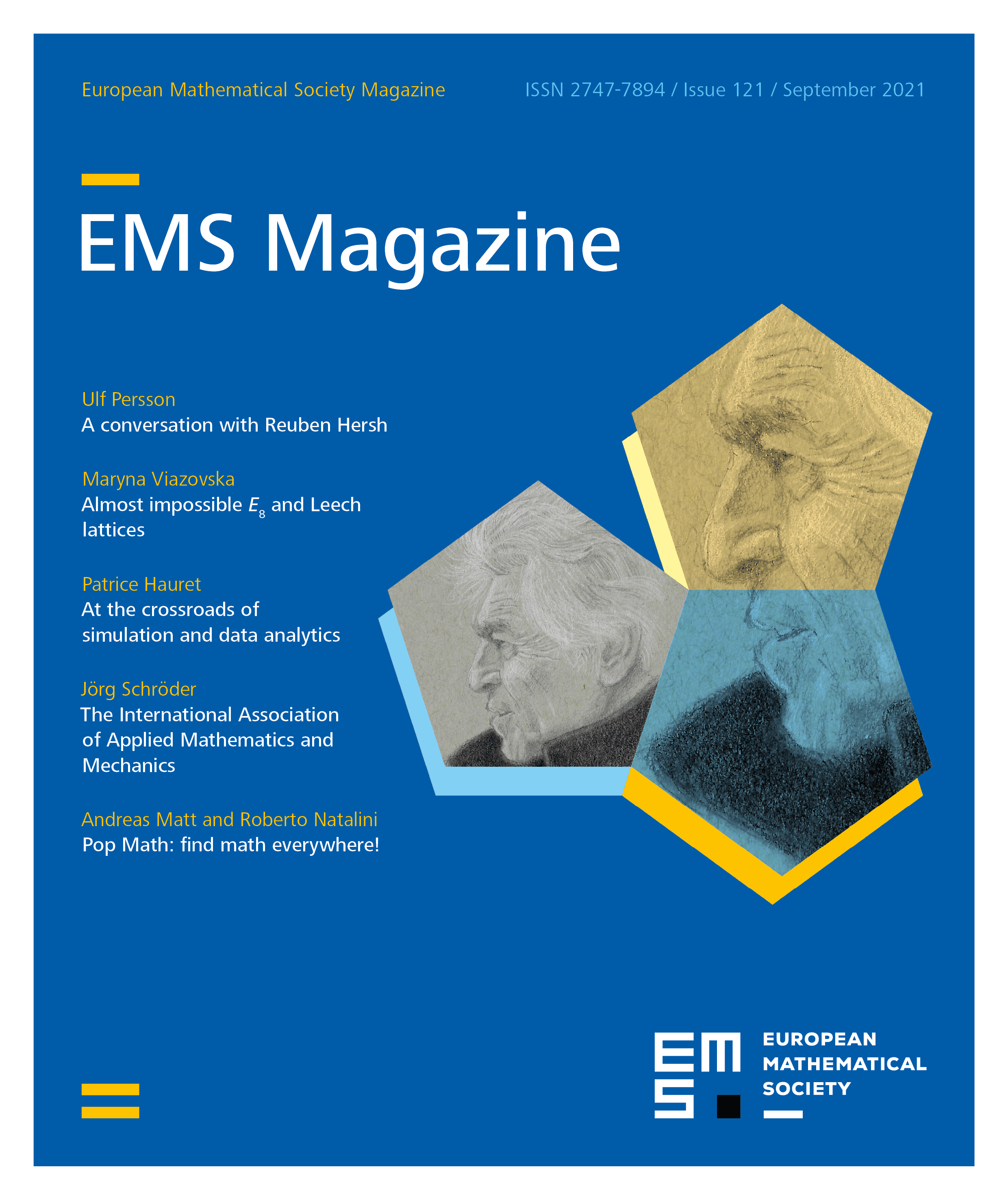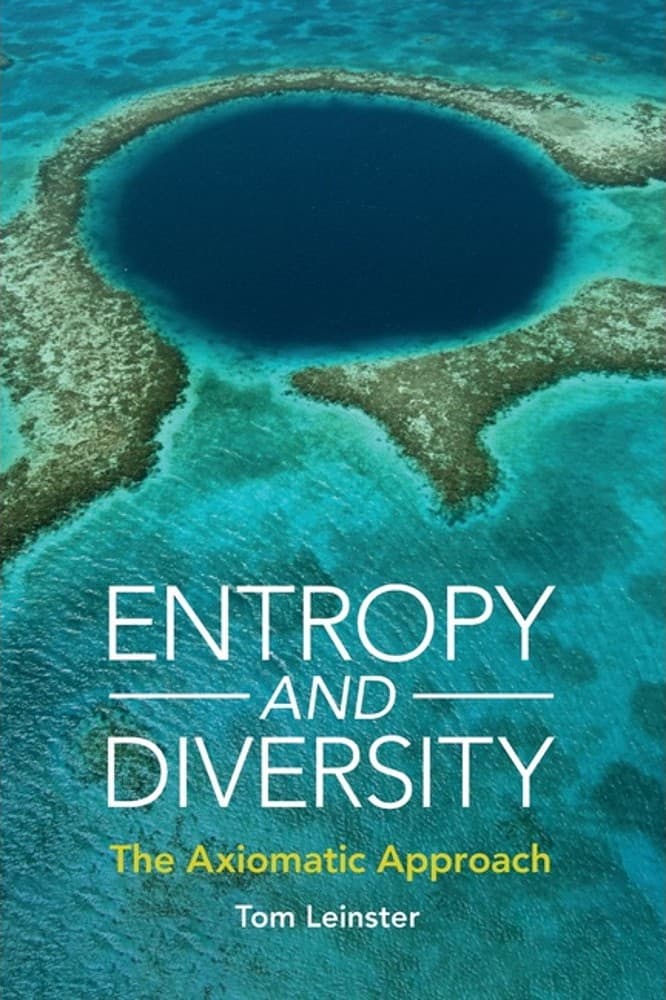All rights reserved.
At least since the recording of the Noahic directive “two of every kind”, humans have instinctively felt that extinction is loss. Because the viable forms of DNA-based life are developed by such arduous processes, it seems like a profound waste of hard-won information to let species become extinct. Furthermore, we know that there are many dependencies between relatively unrelated taxa: for instance birds may depend on berries, or insects, or fish, and humans depend on all the above. Due to habitat loss, pollution and climate change, the potential for a catastrophic domino effect appears to be increasingly imminent. It could be wished that there was not such a clear need for a book like Tom Leinster’s new book Entropy and Diversity: The Axiomatic Approach.
However, in times of natural or artificial disaster, we may be forced into triage situations. With finite resources at our disposal, we may be compelled to decide which biome or which species to save, and measurements of biological diversity help make that decision. Greater diversity means less chance of cascading loss, at least as a first approximation. Further justifications are found in the study of drug resistant bacteria, as well as the study of human gut health, as Dr. Leinster points out in the introduction. Recent experience demonstrates that sometimes we may even desire to minimize diversity, as in the example of virus mutations that have the potential to be worse than their common ancestor.
The thesis of Entropy and Diversity is that by beginning with the list of properties we wish our diversity measurement to obey, we can often completely describe the function or family of functions that will fit those requirements. This is what is called the axiomatic approach. Showing a tight relationship between structure and properties allows the author to review a long list of measurements of diversity (and inversely, entropy) to demonstrate how they are specializations of general principles. At another level, we see that both the contribution of a single individual and the diversity of a community are special cases of a concept of value that is axiomatically determined. Furthermore, many mathematical invariants measuring size (such as cardinality, volume, surface area, fractional dimension, and Euler characteristic) arise from a single concept, of a general invariant called the magnitude of an enriched category. It is shown that this magnitude is closely related to maximum diversity: indeed in some cases they are precisely the same.
Perhaps the most distinctive new contribution here is Leinster’s work (with C. A. Cobbold) on defining a family of diversity measures that depends on both the relative abundances of the species in a population and the pairwise differences between them. The similarity (or dissimilarity) between two species can be measured in many different ways: genetic, phylogenetic, or functional. By defining the value of a species to be its expected similarity (on average) to a randomly chosen individual from the population, it is shown that Leinster and Cobbold’s diversity measures are special cases of an aggregate value function, which also captures the Hill numbers and the phylogenetic diversity of Chao, Chiu and Jost. Not only does the new family of diversity measures respect the similarity matrix (finite metric), and obey the desired properties, it also has the surprising feature of being simultaneously maximizable. Given a similarity matrix, it is shown that the entire family of diversity measures is maximized for a single probability distribution of the species in that ecosystem. The common maximum is yet another invariant measurement, but one which measures (the magnitude of) the metric itself.
In the early chapters, Dr. Leinster motivates and explains the basic problem of deciding how to measure biological diversity, and covers the steps of solving an equation to find a missing function. Then he begins answering those questions with an exposition of Shannon entropy from information theory. Deformations and relative versions of entropy are also covered, each with its corresponding inverse concept of diversity. The central chapters introduce the concepts of mathematical size, value, means and magnitude, and relate them back to the special cases of diversity measures. Along the way, there is a chapter on using probabilistic methods to solve functional equations. Finally there is a nice axiomatic characterization of information loss, discussion of entropy modulo a prime number, and the promised deep dive into the category-theoretical foundations.
Entropy and Diversity is a thorough presentation of the mathematics of measuring diversity, including many new results of uniqueness, unification and utility. Beyond the practical value, it is also a display of mathematical art. Beautiful patterns, at deeper and deeper levels of abstraction, are exhibited to clarify the simplicity of what at first might appear to be abstruse formulas. Leinster approaches the subject like a craftsman, paying attention to every detail. The book is over 450 pages long, but it is so nicely organized and readable that I felt immediately drawn in rather than intimidated. The book is directly accessible to a general audience comfortable with mathematical reasoning. It will be a valuable reference for both mathematicians and mathematical ecologists. The new material has already engendered a lot of discussion on future directions, as can be seen in some recent online conversations:
johncarlosbaez.wordpress.com/2011/11/07/measuring-biodiversity
golem.ph.utexas.edu/category/2020/12/entropy_and_diversity_the_axio.html
Cambridge University Press, 2021, 458 pages, Paperback ISBN 978-1-108-96557-6, eBook ISBN 978-1-108-96217-9
Cite this article
Stefan Forcey, Book Review: “Entropy and Diversity: The Axiomatic Approach” by Tom Leinster. Eur. Math. Soc. Mag. 121 (2021), pp. 53–54
DOI 10.4171/MAG/44
